













The magazine of the art-form of the photo-essay
“A free, really high quality photo-essay magazine. Fabulous!”
Stephen Fry. British actor, writer and film & documentary maker

Mar 2014 back issue


by Ragnar Axelsson

Last March, there was a storm warning on the East coast of Greenland. People were warned to stay indoors as
glacier storms piteraq can be very strong and deadly.
I had been walking outside, photographing dogs, in the little abandoned village Cap Tobin in the Scorebysund area.
I was not planning on travelling anywhere else because of the storm warning. I had spent the past few days
photographing the northern lights and huge icebergs with Inuit hunters that had been following polar bear tracks.
My hunter friends, who I have followed for more than 25 years now, saw four polar bears from their little cabin. Being
hunters, who struggle to survive from day to day, they chose to follow the polar bears and try to catch one before the
storm hit. Inuits eat the meat from polar bears and sell their skins for a high price. It is a big part of their income.
The hunters in Scoresbysund have a quota of 35 polar bears a year.
We could see the bad weather coming from the glacier some miles away but I decided to follow the hunters chasing
the bears across the ice for some 8km. The ice was rough, it had broken up a few days before and almost killed two
hunters who fought to escape for hours on the thin ice as it broke up all around them.
In terrible conditions, I followed with my camera. It was a struggle to keep the lenses clean from mist and snowdrift.
I was a little bit behind when the bear was shot. The hunter made his move and shot the bear twice as it ran to make
its escape. Whilst running on rough ice, the hunter lost most of the bullets out of his pocket, leaving us with only
one bullet and three bears. We had no idea if the bears would attack us or run away. We could only hope for the
latter as the ice started to crack and open up all around us.
We managed to drag the dead polar bear to safer ice before having to wait for three hours until the dog sledge came
to collect us and our valuable catch. The ice was unstable and dangerous. It took us few hours before we got to
safety. The storm lasted a day and the next morning the ice where we had been walking was gone.
Life for Greenland’s hunters is undergoing major change. The ice is melting, due to global warming. When I asked
the hunters how long they thought they would be able to hunt polar bears, they looked sad, “We don´t know. It is not
us hunters who are a threat to polar bears, it is mankind who pollute too much.” Numbers of polar bears have fallen in
recent years by up to a third on Greenland’s East coast. It is thought that pollution coming in on currents from the
industrialised world is causing the decline. There is also evidence that pollution is causing an increase in human
cancers on the East coast as the population relies on polar bear, seal and whale meat taken from polluted seas.
Greenland is the most expensive country in the world so it is sometimes hard for me to get there and stay for any
length of time. It is a country naturally rich in minerals gold and diamonds. It will be interesting to see the changes
over the following years. Where it all will go? The main question is: Will the four thousand year old tradition of the
Arctic Hunters survive the changes caused by climate change and the actions of the rest of the world?
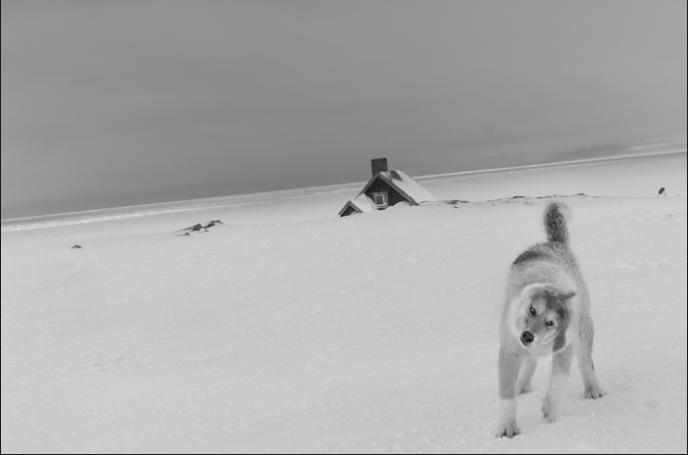
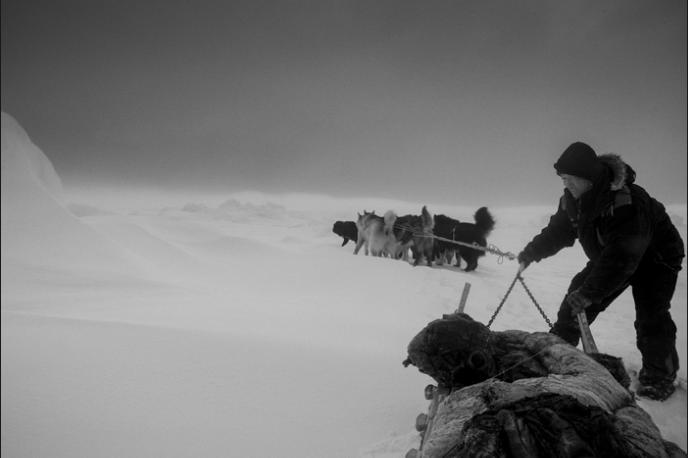
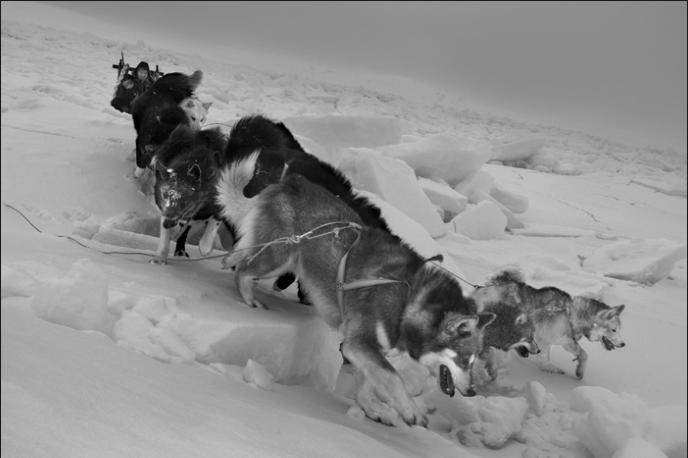


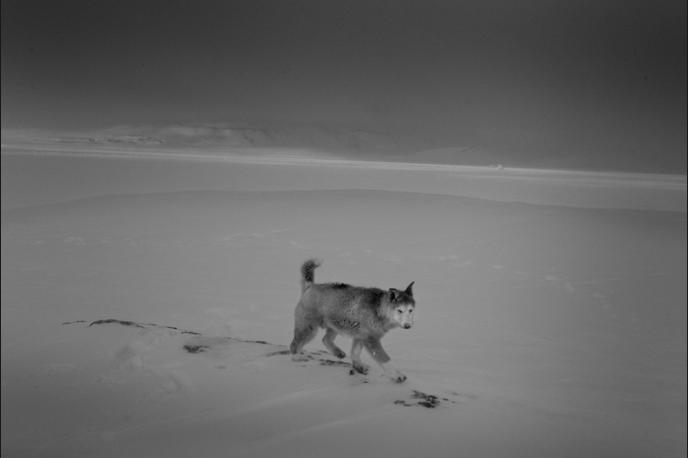
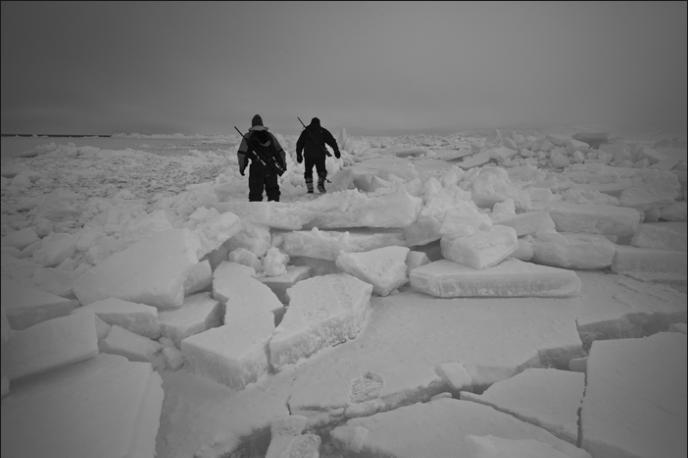
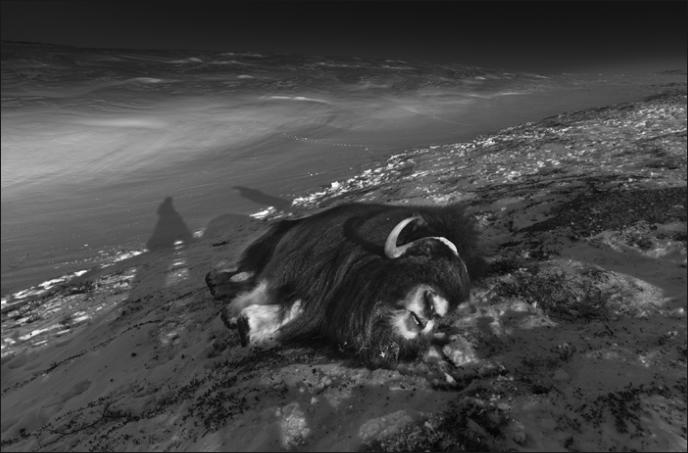

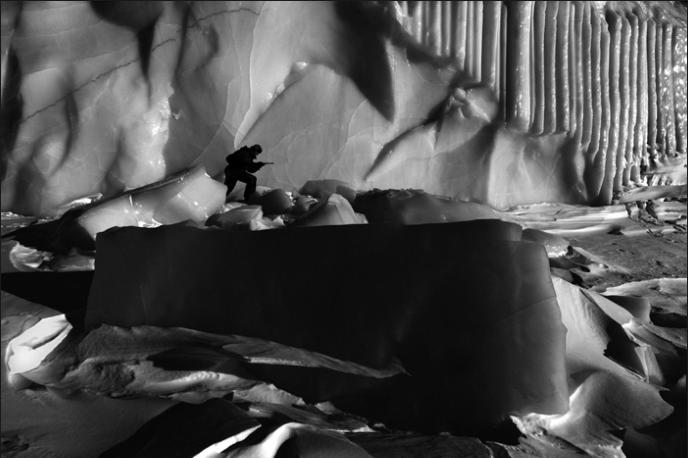
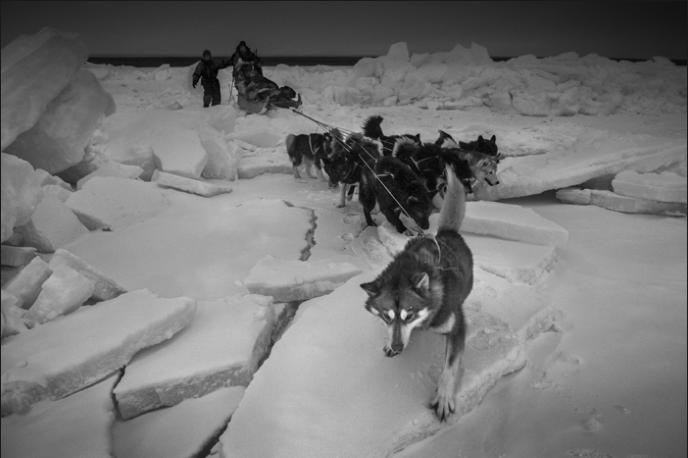
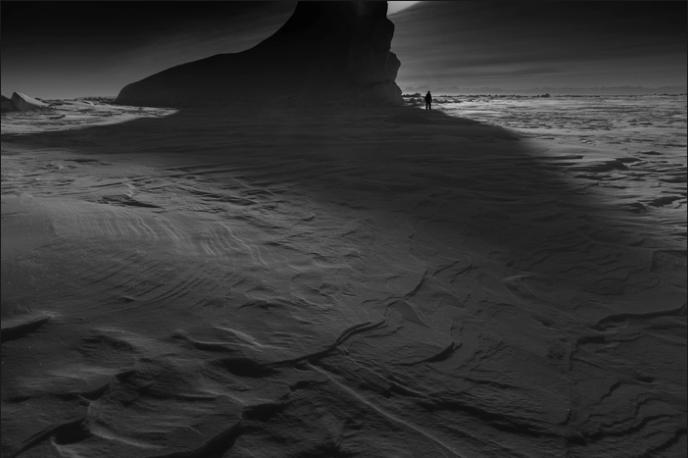
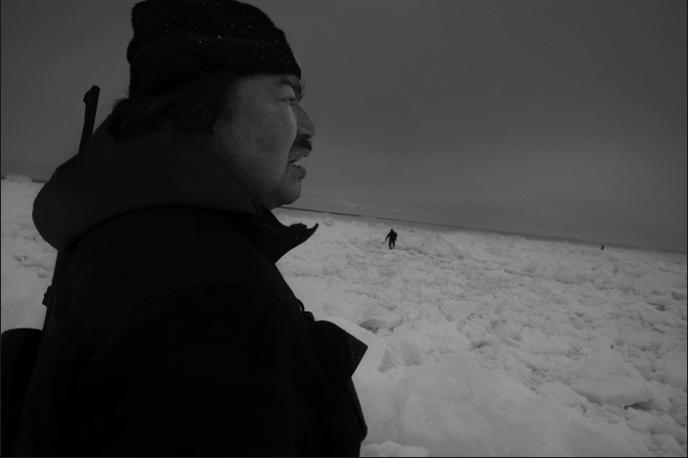
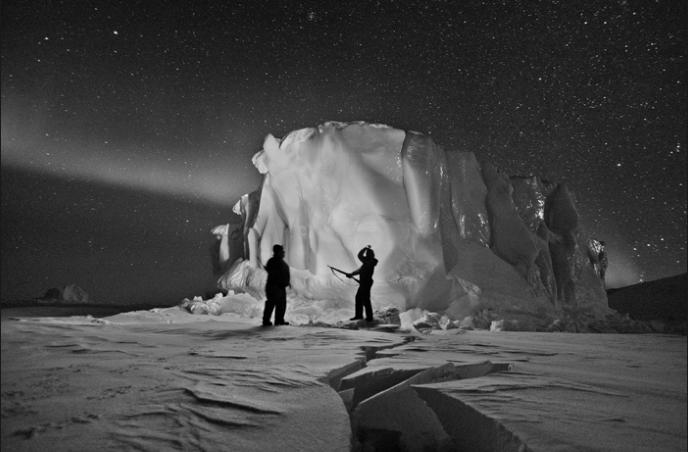
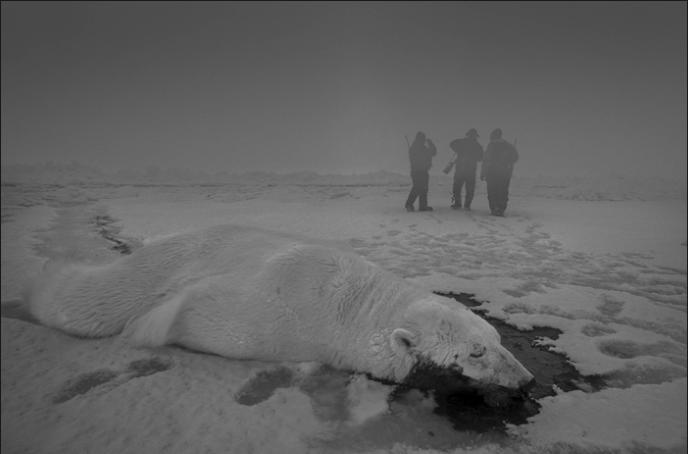

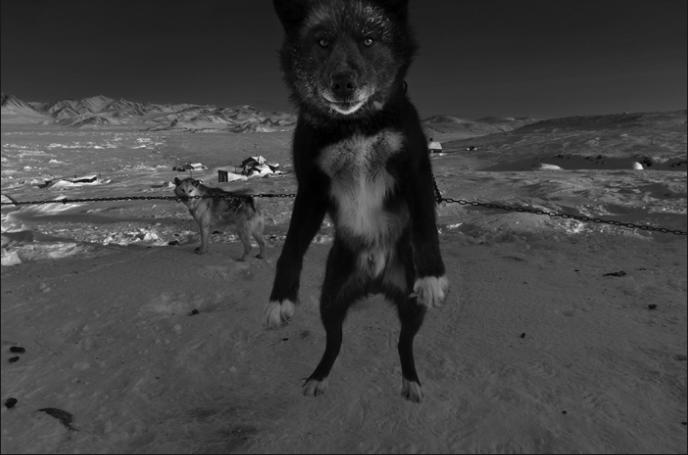

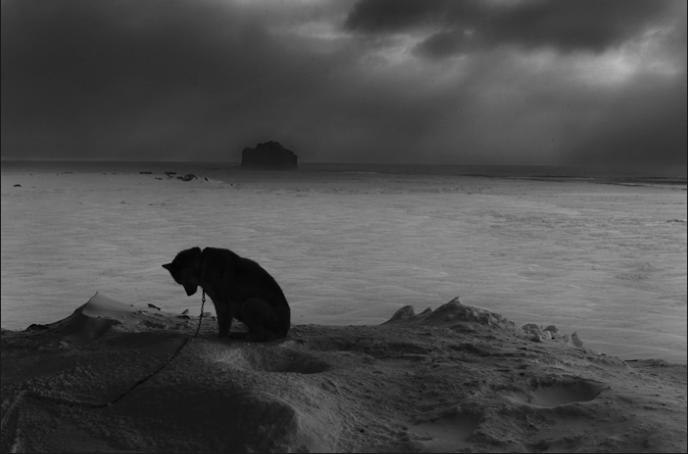

A hunter in front of his cabin in the abandoned village Cap Tobin watches polar bears on the ice in the subtle hue from
the dancing northern lights in the Arctic sky.
A hunter tracing polar bear tracks past a gigantic iceberg.
Hunters traveling on their dog sledge on the cracking pack ice.
A hunter on the ice at Kangertittivaq (Scoresbysund´s fjord). Kangertittivaq is the largest and longest fjord system in
the world.
Inuit hunter chasing a polar bear over the rough and braking ice. A storm was coming, making the ice unsafe and
dangerous.
Hunters rest near an iceberg in the polar night with dancing northern lights and shooting stars.
A fallen polar bear on the ice. Inuit hunters in Ittoqqotoormiit are allowed to hunt 35 polar bears each year.
Arctic hunter fighting a storm on the frozen ocean on his way home to safety.
Arctic sledge-dog dancing after a long journey on the ice.
At the end of the short winter´s day the sled dogs rest in the snow in front of their masters cabin. The Arctic night
takes over.










